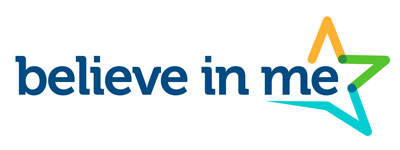National Hispanic Heritage Month is celebrated each year from September 15 to October 15 to honor the rich cultures and contributions of Latino communities. As this celebratory month draws to a close, it’s time to turn reflection into action. One powerful way to honor Hispanic heritage year-round is by empowering the next generation – first-generation and immigrant youth. These are the young trailblazers forging new paths in their families and new roots in their communities. They face unique challenges, but with our support, they can soar. First-generation youth are typically the first in their immediate family to achieve milestones like attending college or growing up in the U.S. with immigrant parents, while immigrant youth are those who moved to the U.S. at a young age. Both groups bring incredible resilience and potential, and they deserve more than a month of recognition – they deserve unwavering support every day.
🌟 Quick Action: Want to make a lasting impact beyond Hispanic Heritage Month? Donate now to empower a first-gen student’s dream or volunteer as a mentor. Together, we can turn celebration into meaningful change!
Why First-Gen and Immigrant Youth Hold the Key to Our Future
Hispanic Heritage Month isn’t just about celebrating history. It’s about investing in the future, and first-generation (first-gen) American youth and immigrant youth are that future. First-gen students, whose parents didn’t have the chance to attend college (or grew up outside the U.S.), often find themselves charting uncharted territory. Immigrant youth, likewise, are adapting to a new country while striving to succeed in school and society. These young people carry the hopes of their families and the potential to become tomorrow’s leaders, professionals, and changemakers.
It’s also a growing group. More than 90% of Hispanic children in the U.S. are American-born citizens, and over half live in immigrant families. Here in the Pacific Northwest, Latino communities are significant and expanding – parts of Washington State, like Adams, Franklin, and Yakima counties, are majority Hispanic. In Idaho and Oregon, several counties have Latino populations above 30%. In other words, our region’s future teachers, nurses, engineers, and entrepreneurs increasingly come from first-gen or immigrant backgrounds. Empowering these youth now means a stronger community for all of us later.
Yet, first-gen and immigrant kids often walk a tightrope: balancing between cultures, learning to navigate American systems on their own, and pushing past barriers that others their age might never imagine. Below, we’ll explore those barriers – and how we can transform them into stepping stones for success.

Challenges They Face – and How We Can Turn Them Into Opportunities
Elevating first-gen and immigrant youth starts with understanding what they’re up against. From the classroom to the dinner table, these young people may face hurdles in education, economics, and emotional well-being. The good news? Every challenge is also an opportunity for us (as mentors, neighbors, donors, and allies) to make a difference. Let’s break it down.
Education Gaps & Triumphs
For many first-generation students, the path to higher education is uncharted territory. They can’t turn to their parents for college advice, and it shows in the numbers. Research finds only about 54–58% of first-generation students enroll in college right after high school, compared to 82% of peers whose parents have degrees. That gap isn’t about capability or drive – it’s about access to guidance and resources. Without parents who know the ropes, tasks like SAT prep, college applications, or scholarship searches can feel overwhelming.
Despite these odds, first-gen youth are achieving incredible things. They bring fresh perspectives and determination to campuses. In fact, once in college, their performance often matches or exceeds their continuing-generation peers – perseverance is their superpower. But getting through the door is the hardest part. Imagine navigating financial aid forms full of jargon when you might still be perfecting your English, or deciding on a major when no one in your family had the luxury of such a choice.
How we turn this into an opportunity: Mentoring and targeted college prep make a huge difference. For example, our own Believe in Me community launched iLevelUp, a first-gen college empowerment app, to guide students step-by-step through college applications and beyond (from FAFSA tutorials to finding on-campus support). Programs like this demystify higher education. And support doesn’t stop at admission – providing a mentor or peer network for first-gen college students can boost retention and graduation rates. When these students do graduate, they often credit the “village” that helped them – and then they, in turn, inspire siblings and others. It creates a beautiful ripple effect of educational uplift.
(Did you know? Latinos are earning more college degrees than ever, but still underrepresented in higher ed. Only 8% of U.S. advanced degree holders are Latino. By helping first-gen students get to and through college, we’re literally changing what leadership looks like in the future.)
Economic & Basic Needs Barriers
Educational aspirations don’t occur in a vacuum – a young person’s basic needs and home environment play a huge role in their success. Many immigrant and first-gen families face financial hardships. More than 1 in 5 Hispanic children live below the poverty line, a rate much higher than the national average. This can translate to overcrowded housing, food insecurity, or taking on work at a young age to help pay bills. If you’re worried about where your next meal will come from or have to pick up evening shifts at 16, it’s hard to ace the SAT or attend extracurriculars.
Take the example of Frida, a (hypothetical) first-gen 10th grader in Washington. She gets up early to help her younger siblings get ready (because her Spanish-speaking mom is working an overnight shift), goes to school all day, then works 20 hours a week at a grocery store. College campus tours or SAT prep courses? Out of the question – time and money are too tight. Frida is exactly the kind of bright, determined youth who can thrive if we lighten her load a little.
How we turn this into an opportunity: By ensuring these basic needs are met, we give youth like Frida room to breathe and focus on growth. Community programs and donors are crucial here. For instance, when you support our Basic Human Needs pillar, you might be stocking a food pantry at a youth center or funding a “home starter kit” for a homeless teen moving into stable housing. Something as straightforward as providing nutritious after-school meals or a safe place to study can keep a kid in school. Food security, in particular, is foundational; it’s hard to do homework on an empty stomach. That’s why we and partner organizations invest in initiatives like school snack programs and family grocery support – because feeding the body fuels the future.
Similarly, covering costs for necessities (books, transportation, even Wi-Fi access) through scholarships or grants removes barriers. Every dollar donated towards these essentials is a direct investment in a young person’s potential. Remember, today’s first-gen student juggling work and school could be tomorrow’s skilled professional contributing back to the economy – if we help bridge the gap.
(On that note, shout out to programs like Latino Community Fund (LCF) of Washington, which focus on economic empowerment. LCF has been building the leadership of Latinx youth and advocating for environmental justice in our region. They, like us, recognize that empowering youth is multifaceted – from scholarship funds to skills training to creating job opportunities.)
Language, Culture & Belonging
Many first-gen American kids grow up in a beautiful in-between: translating the new world to their parents and their parents’ world to the new. It’s common to hear stories of an eight-year-old on the phone, paying the utility bill or interpreting at a doctor’s appointment, because they’re the one in the family fluent in English. These language brokers shoulder adult responsibilities young. On the positive side, they often develop maturity, empathy, and killer bilingual skills. But it can also be stressful and isolating – who guides the guide when they’re still a kid themselves?
Cultural identity is another double-edged sword. Holding onto one’s heritage while assimilating can be tough for immigrant youth. Many encounter teasing or discrimination for speaking Spanish or observing cultural traditions. Others feel pressure to “act American” at school, then switch to a different role at home – essentially living in two worlds. Without a sense of belonging, a young person can struggle with self-esteem and mental health. Studies actually show that youth with strong cultural identities have lower rates of anxiety, depression, and isolation – culture provides community and prideg. Conversely, losing that connection can harm confidence.
Unfortunately, some trends are worrying. The mental health of Hispanic youth has been under strain in recent years. The CDC reported that suicide rates among Hispanic Americans rose 10% between 2018 and 2021, even as the rate for non-Hispanic whites declined. Experts believe factors like family separation, anti-immigrant rhetoric, and lack of access to care in Spanish contribute to this. Imagine being a teenager hearing negative messages about “immigrants” on the news, while also seeing your parents struggle to understand a system not built for them. It can take a toll on even the strongest spirits.
How we turn this into an opportunity: The antidote to these challenges is inclusion and support. We can create environments where first-gen and immigrant youth feel seen, heard, and valued for exactly who they are. Simple efforts matter: schools starting a Hispanic Heritage Club; libraries carrying books in Spanish; mentorship programs pairing youth with adults from similar cultural backgrounds. When a young person meets a mentor who shares their heritage and succeeded in higher education or business, it’s hugely affirming – “if they did it, I can too.”
On a family level, providing resources in parents’ native languages (from school newsletters to college info nights with interpreters) brings parents into the journey, so youth aren’t bearing the whole weight. For instance, in our programs we ensure workshops about college or health are offered in English and Spanish. This not only informs parents but honors them as partners in their child’s success.
Culturally competent mental health services are also key. Training counselors who understand Latino family dynamics or immigrant trauma can literally save lives. Some communities have started bilingual teen support groups and consejerías (counseling with a cultural twist). We integrate mental wellness into much of our grantmaking – even if it’s not labeled “mental health,” a grant for a Latinx youth summer camp where teens bond with others who share their background can boost emotional well-being tremendously (and reduce that isolation).
Above all, we need to send first-gen and immigrant youth an unwavering message: your heritage is your strength. When a student can celebrate their culture (not hide it) and at the same time get the support to navigate mainstream life, they truly get the best of both worlds. That’s a win-win for all of us.

5 Ways to Elevate First-Gen & Immigrant Youth Today
So, how can each of us turn all this understanding into action? Here are five practical ways – big and small – to make a difference in the lives of first-gen and immigrant kids. (Hint: Our organization works across all these areas, but you can jump in too, whether through us or on your own.)
- Champion Culturally Responsive Education: Support schools and programs that meet students where they are linguistically and culturally. This could mean donating to a bilingual tutoring program, volunteering at an after-school homework club in a Latino neighborhood, or simply advocating at your local school board for ESL resources. When a student’s language and culture are seen as assets in the classroom, not obstacles, they thrive. For example, a high school that offers Spanish-language college nights for parents or incorporates Latin American history in the curriculum sends a powerful message of inclusion. Consider funding a classroom project for English-language learners or sponsoring field trips to Hispanic cultural events. These experiences validate students’ identities and keep them engaged in learning.
- Mentor (or Befriend) a First-Gen Student: There is no substitute for one-on-one support. Many first-gen teens and college students say a mentor made all the difference – someone to proofread their college essay, give career advice, or just celebrate their wins (since parents who haven’t been through it might not know what the milestones are). You can volunteer through mentorship programs (for instance, our Believe in Me team runs a mentorship initiative that pairs caring adults with youth in various life stages – from high schoolers aiming for college to young adults starting careers). By becoming a mentor, you offer the benefit of your experience and networks. Imagine taking a first-gen college freshman out for coffee once a month: you could help them troubleshoot challenges or set goals. It’s a small time commitment with a life-changing impact. And mentors often find it’s rewarding for them, too – you learn so much from the younger generation!
- Advocate for Youth-Friendly Policies: Use your voice in the public sphere. Many challenges first-gen and immigrant youth face are systemic, which means our elected leaders need to hear from us. Advocacy can take the form of calling for equitable school funding, so schools in immigrant communities have strong college counseling and AP classes. It could mean pushing for legislation that protects Dreamers (DACA youth) so they can pursue education and careers without fear, or supporting policies that expand need-based financial aid. Even local policies count: is there a proposal to provide free community college in your state? Write that op-ed or call your representative! Additionally, policies like cultural competency training for foster parents (as California has done) ensure that youth in systems like foster care don’t lose their cultural identity. When you vote and advocate with first-gen and immigrant youth in mind, you scale up your impact from one child to thousands.
- Help Meet Basic Needs (Donate or Organize Drives): Sometimes the immediate needs must be addressed first. If a student is hungry or lacks a winter coat, that’s priority one. You can get involved by supporting food banks, youth shelters, or scholarship funds that provide living stipends. For instance, donating to our Basic Human Needs fund helps us provide essentials like food, clothing, or safe housing to youth in crisis – those interventions stabilize kids so they can return their focus to school and personal growth. You might also start something in your own community: a school supply drive for low-income immigrant families at the start of the school year, or a fundraiser to cover college application fees for first-gen seniors at a particular high school. Every bit helps. Think of it this way: removing a $50 barrier (like an SAT fee or a broken eyeglasses replacement) could be the small boost that keeps a young person on track. It’s all interconnected.
- Celebrate Their Stories and Achievements: Elevating youth is also about amplifying their voices. Make a point to celebrate first-gen and immigrant youth in your community. Did a local student get a big scholarship as the first in their family to go to college? Share it on social media or your company newsletter (with permission, of course). Attend cultural events like Hispanic Heritage Month festivals, and encourage youth to take on visible roles there (performing, speaking, volunteering). When society shows pride in them, they feel pride in themselves. At home or work, create spaces for sharing: during Hispanic Heritage Month, maybe host a lunch-and-learn where a few first-gen colleagues or students tell their stories. Listening and learning from them not only educates others but also empowers the youth narrators. Representation matters; the more we spotlight positive images of first-gen and immigrant youth (scientists, artists, student leaders, etc.), the more young people see what’s possible.
These actions aren’t just for one month – they’re things we can do all year. And as you can see, individuals, businesses, schools, and nonprofits each have a role. By combining efforts, we create a strong safety net and launch pad for these future leaders.

From Heritage Month to Everyday Impact – Our Commitment
At Believe in Me, we believe that closing out Hispanic Heritage Month is not an ending but a call to begin something enduring. The Five Pillars of Caring that guide our grants and programs – Basic Needs, Love & Belonging, Education, Community Support, and Enrichment – are all about giving youth the foundation they need to succeed. In practice, that means funding everything from safe housing for homeless teens to STEM enrichment camps for girls of color, from therapy and mentorship programs to college coaching for first-gen students. Each pillar reinforces the others, creating a circle of support around marginalized youth.
For example, through our Education pillar, we launched the scholarship and college prep resources for first-gen students we mentioned earlier. This fall, 10 students from Washington and Idaho started college with our scholarship – among them, the very first in their families to ever set foot on a university campus. One scholar wrote to us, “I carry my parents’ dreams with me. Thanks to your support, I’m studying engineering at UW. I want to show my younger siblings that sí se puede – yes, we can!” That’s the kind of generational ripple your support creates.
We know these issues are complex and change doesn’t happen overnight. But every day we see reasons for hope. Whether it’s a shy immigrant middle-schooler finding her voice in a dance enrichment class (thanks to a grant under our Enrichment pillar), or a foster youth from a Latino background finally reuniting with relatives who understand his culture, we witness transformation regularly. Our job – and passion – is to fuel more of it.
And you are a crucial part of this mission. As Hispanic Heritage Month ends, we invite you to help us keep the momentum going. Let’s continue to celebrate heritage by investing in its heirs. The dreams of first-gen and immigrant youth are as diverse as their backgrounds: becoming teachers, coders, artists, entrepreneurs, doctors, or maybe the next activist like Cesar Chavez or Dolores Huerta (who both came from humble immigrant roots to change the world). When you support these young people, you’re honoring all those who came before and empowering all who are yet to come.
Your contribution – whether it’s time, talent, or treasure – truly matters. It can be the difference that enables a student to persist or a family to feel part of a community. Hispanic Heritage Month reminds us to celebrate past and present contributions; now let’s also commit to future contributions by equipping the next generation to shine.
Hispanic heritage is alive in the perseverance of a first-gen college grad, in the laughter of children speaking Spanglish on a playground, in the brilliance of ideas that come from blending cultures. Let’s nurture it. 💞
Ready to turn celebration into action? Below you’ll find answers to common questions and more ways to engage. And remember: although the official month concludes on October 15, the work of uplifting youth continues 365 days a year – with your help, it will only grow stronger.
👉 Final Call: Join us in making a year-round difference. Donate today to fuel scholarships, safe homes, and empowering programs for first-gen and immigrant youth in our communities. If you can’t give right now, sign up for our newsletter to learn more and spread the word. Together, vamos adelante – we move forward, together.
Key Takeaways
- Hispanic Heritage Month (Sept 15–Oct 15) celebrates Latino cultures and contributions; as it ends, we’re challenged to extend its spirit year-round by supporting the next generation.
- First-generation and immigrant youth often face big hurdles – from language barriers and poverty to education gaps – yet they also possess extraordinary resilience and potential. They are key to our communities’ future success.
- Challenges = opportunities: Lower college enrollment, financial strain, or cultural isolation among these youth aren’t insurmountable problems; they are calls to action for all of us to step up with mentorship, resources, and inclusive practices.
- Empowerment works: When we invest in programs that provide basic needs, mentorship, cultural validation, and scholarships, first-gen and immigrant kids thrive – turning into college grads, community leaders, and confident adults.
- Your role matters: Whether through donating, volunteering, or simply encouraging a young person, you can help elevate a first-gen or immigrant youth. Heritage is honored best by investing in those who will carry it forward.
Bottom Line
Closing Hispanic Heritage Month is not an ending – it’s our moment to begin uplifting first-gen and immigrant youth with renewed focus. By turning celebration into support, we honor the past and empower the future. Every act of help, no matter how small, can spark a life-changing difference for a young person poised to shine. Let’s ensure the pride and unity of this month live on through the opportunities we create – juntos, together. 💖
Get to know more about Believe in Me and Help a Kid Today
VOLUNTEER
DONATE
MENTOR
Frequently Asked Quesions
What is Hispanic Heritage Month and why does it matter?
Hispanic Heritage Month is a national celebration from September 15 to October 15 recognizing the histories, cultures, and contributions of Hispanic/Latino Americans. It matters because it honors a vibrant and diverse community that has shaped the U.S. – and it’s a time to educate others, celebrate cultural pride, and address issues facing these communities. For example, schools and organizations often host events highlighting Latino music, food, and historical figures during this month. It’s also an opportunity to reflect on how to support Hispanic communities (like empowering youth) beyond the 30-day celebration.
What does “first-generation youth” mean exactly?
First-generation youth typically refers to young people who are the first generation in their family to accomplish something significant in a new country. Often, it means first-generation college students – students whose parents did not complete a four-year college degree. More broadly, it can include the U.S.-born children of immigrant parents (first-generation Americans) who are the first in their family born or raised in the United States. These youth often navigate new systems (education, careers) without parental guidance from experience, which is why targeted support can be so beneficial.
What challenges do first-gen and immigrant students face in school?
They face a mix of academic, financial, and social challenges. Academically, first-gen students might lack mentors to guide them through college prep – for instance, they enroll in college right after high school at much lower rates than peers whose parents graduated college. Financially, many come from low-income families and worry about college costs or even daily needs like internet access for homework. Socially, they might struggle with imposter syndrome or balancing family responsibilities (like translating for parents or working a job) with school. Immigrant students may also face language barriers and the stress of adapting to a new culture. Despite these challenges, with support (mentors, tutoring, financial aid), first-gen and immigrant students do succeed – often at comparable rates to their peers. The key is providing those safety nets and bridges early.
How can I help immigrant youth or first-gen students succeed?
There are many ways to help, whether you’re an individual or part of a company/school:
- Mentoring/tutoring: Volunteer to help with homework or be a college/career mentor. Having a role model makes a big difference.
- Donating: Contribute to scholarships or nonprofits (like Believe in Me) that fund programs for these youth. Donations remove financial barriers – e.g., covering SAT fees, college textbooks, or living expenses.
- Advocacy: Support policies that expand educational access (such as grant programs, DACA protections, or bilingual education funding).
- Community involvement: If you’re an employer, offer internships to first-gen college students. If you’re a community member, attend cultural events or support local Latino youth organizations to show you value their heritage.
- Even simple acts like encouraging a young person and celebrating their achievements boosts confidence. Essentially, become part of their support network – it takes a village, and you can be in that village.
Are there organizations in Washington or the Pacific Northwest focused on Hispanic youth?
Yes, absolutely. Our region has several fantastic organizations. For example, Latino Community Fund of Washington develops Latinx youth leadership and provides scholarships. Casa Latina in Seattle advances the well-being of Latino immigrant workers and their families (offering job skills and education programs). In Oregon, you have groups like Euvalcree in Eastern Oregon which empower Latino youth civic engagement. And of course, Believe in Me (that’s us!) is a foundation that funds youth empowerment initiatives across WA/OR/ID – many of our grantees serve Hispanic and immigrant youth in areas like education and basic needs. If you’re looking to get involved, you can reach out to these organizations to volunteer or support, and check out local community centers or school-based programs (like MEChA clubs or Latino Parent Committees) in your city. There’s a growing network of support – and we’re proud to be part of it.
Why is cultural identity important for youth development?
Cultural identity – knowing and valuing where you come from – is a pillar of confidence and mental health for young people. Studies have shown that youth who have a strong sense of their cultural heritage tend to have lower rates of anxiety and depression. Culture provides a sense of belonging: access to a community that shares your language, traditions, and values can act as a support system. On the flip side, when youth feel they must reject or hide their culture to “fit in,” it can harm their self-esteem and create identity confusion. This is especially relevant for Hispanic/Latino youth in the U.S., who might feel pulled between mainstream American culture and their family’s roots. Celebrating cultural identity (through festivals, clubs, bilingual media, etc.) gives youth pride and a strong foundation to build on. It’s like roots to a tree – the deeper and stronger the roots, the more the tree can grow and withstand storms. That’s why many youth programs (including ours) incorporate cultural celebration and identity-affirming activities as part of empowerment.
What does my donation to Believe in Me actually fund?
Great question! A donation to Believe in Me goes directly into funding our grants and programs under the Five Pillars of Caring for marginalized youth. For instance, your gift might help:
- Provide a scholarship for a first-gen student’s tuition or books,
- Equip a safe home for a formerly homeless teen (bed, clothes, food – covered under Basic Needs),
- Run a mentorship or after-school program (training mentors, providing curriculum and supplies for say, a STEM club or arts workshop for enrichment),
- Offer counseling and support groups for youth who have faced trauma or are navigating identity issues (Community Support pillar),
Or even feed creativity, like purchasing instruments for a music program that boosts kids’ confidence.
We also sometimes issue grants to smaller nonprofits doing awesome work with Hispanic/Latino youth, meaning your donation could be re-granted to amplify community-led efforts. We pride ourselves on transparency and impact – in our Annual Report (accessible on our site), you can see that $0.90+ of every $1 goes to program support. Essentially, your donation becomes an investment in a young person’s future, and we allocate it to wherever the need is greatest under our mission umbrella. (If you ever want to discuss or direct your gift to a specific pillar, we’re happy to chat!).
Is Hispanic Heritage Month the only time to focus on these issues?
Not at all – it’s just a spotlight time. Hispanic Heritage Month is a wonderful period for awareness and celebration. But the needs and efforts we’ve discussed are year-round. The end of HHM (Oct 15) should really be seen as the beginning of the next chapter. The youth we aim to elevate need support in November, February, July – all year. In fact, one critique you sometimes hear is that focusing only during HHM can be superficial. We agree that the commitment must be ongoing. Think of HHM as a springboard: you learn, you get inspired, and then you keep the momentum going. That’s why we intentionally launched certain programs in the fall, to capture that HHM energy and carry it forward. In short: these issues don’t hibernate for 11 months, so neither should our support. Every month can be “Heritage Month” when we consistently invest in and celebrate the community.






